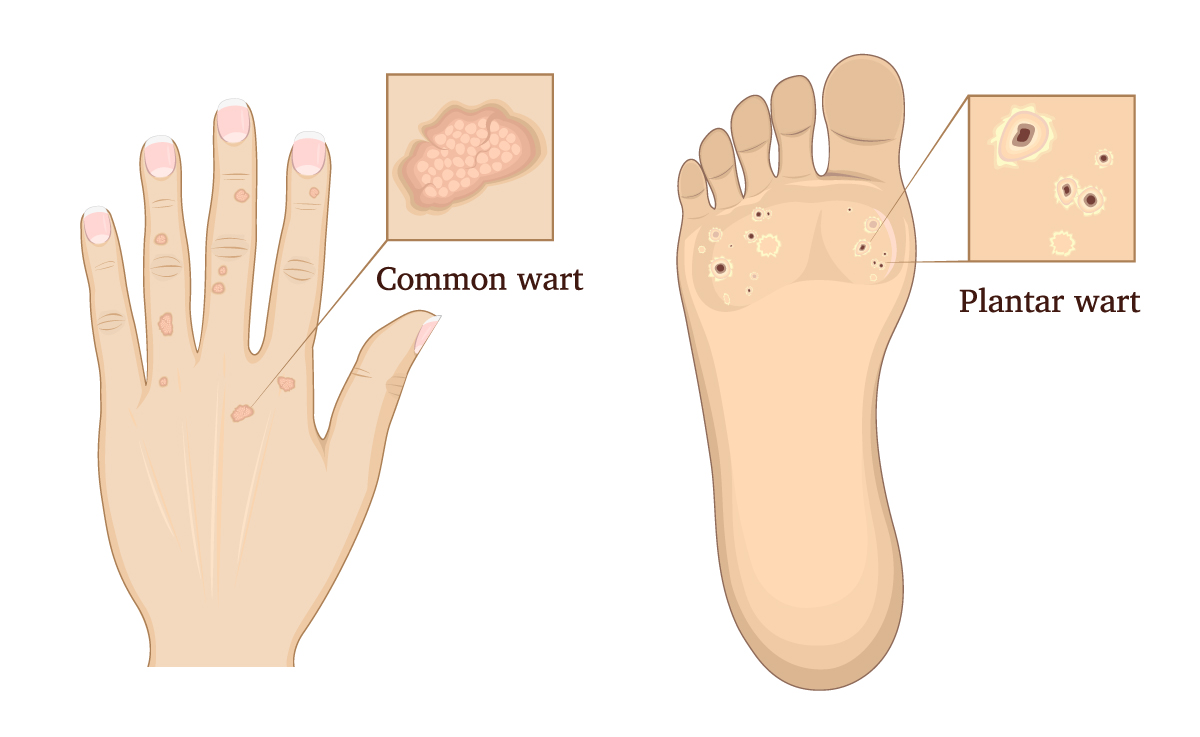Warts are very contagious and can impact anyone at any time, although they’re more common in children and teens. These are the most common types of warts people tend to get:
Warts
Warts are benign skin growths caused by human papillomavirus (HPV). Warts most commonly appear on the hands or the feet, and the virus is contagious and can spread via touch. Warts are usually skin-colored and rough to the touch. While usually painless, they can become painful - especially on the soles of the foot. Warts are usually harmless and may go away with time, but there are also many dermatological treatments for warts.
The Types of Warts

Treatment Options and Wart Removal
In some cases, warts will go away on their own without ever requiring treatment. This is especially common in children. In other instances, however, you’ll need to have the wart treated to get it to disappear. Here at Dermatology Associates, we provide a variety of wart removal treatment options for clients, including the following:

